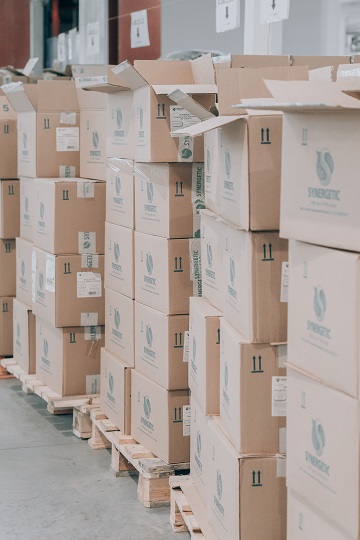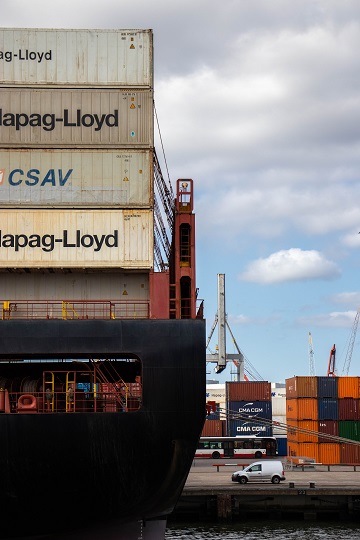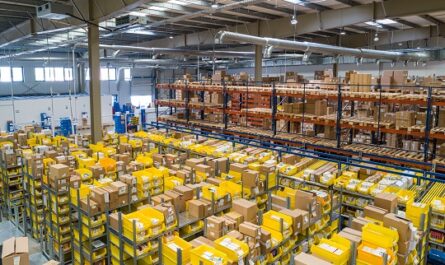Keeping excess inventory is not good. I’m sure those of you who work in supply chain management agree on that.
Excess inventory disrupts your cash flow. Because the more inventory, the slower your money turnover because it is stuck in a form of inventory.
Besides, the warehouse will be full. Which sometimes disrupts warehouse operations because warehouse corridors are filled with excess inventory.
Not to mention there is a risk of damage and loss of quality, either due to handling, or wear and tear due to old items sitting idle in the warehouse.
However, it turns out that there are several conditions where excess inventory can be beneficial.
When is excess inventory beneficial?
That’s what we will discuss this time. But before that, make sure you have also joined the scmguide telegram channel to continue to get notifications of the latest articles from this blog and get more insights about supply chain management.
Table of Contents
Natural disasters disrupting supplies
Natural disasters are one factor that can disrupt supplies to your site.
Once upon a time, there was a natural disaster in a country supplying a manufacturing company. Even for some other manufactures. All get material supplies from the same country.
What happened at that time was a massive flood that hit every area where the production facilities of these suppliers were located.
As a result, the production process stopped. The road is impassable. And of course the supply to their customers is hampered.
The stopped supply forced manufacturing companies to stop operating at that time. They don’t get the components they need to make their product.

Interestingly, there is one manufacturing company that continues to operate as usual. They keep their production facilities running and manufacture products to ship to their customers.
What really happened?
How can they do that?
When excess stock is beneficial
In fact, so far the manufacturing company has a lot of inventory. They have all the components they need in excess.
And when there is a supply disruption from their supplier due to a natural disaster, they take advantage of the moment for two things.
Gain market share
With the inventory they have, they can continue to run their production. While other manufacturers stop operating, and their products disappear from the market, this company continues to supply its products.
This is their chance to take over their competitor’s market. And they know exactly that. That’s what they do.
Lower inventory levels
The second thing they did was take advantage of this moment to lower their inventory level. They realized that they shouldn’t have too high inventory levels. But they have not found an effective way to reduce it.
And that opportunity actually came when there was a supply disruption from their supplier.
And again, that’s what they do.
You might also like:
- Why the Right Mindset is Needed in Supply Chain Management
- Why Just Understanding Supply Chain Management Is Not Enough To Make Supply Chain Operations Better
- How Wrong Supply Chain Decisions Can Bring a Business Down
Do you have to keep excess inventory?
With the conditions that really happened like the story above, does that mean it’s okay to have excess inventory?
In the case above, the company is indeed benefiting (or maybe lucky) because it has excess inventory. But, let’s look at a few things.
How often do supply disruptions occur?
The first question is how often supply disruptions occur in your business?
If you choose a truly trusted supplier, I’m sure supply disruptions will rarely occur. Even if it happens, it could be due to natural disasters that cannot be predicted and avoided. But, arguably, it’s extremely rare.

The case above is just a momentary moment. But the positive thing that companies do is that they can put it to good use to improve their inventory conditions.
What must be done to maintain inventory levels?
It’s great to take advantage of the moment that happened, but what’s most important is what are you going to do after it’s over?
What will you do to maintain the positive results you have achieved from that moment?
Reflecting on the cases above, these companies can indeed reduce their inventory levels when there is a supply disruption. However, after the supply returned to normal, their inventory was back in excess.
Why?
Because they haven’t finished their biggest homework yet, which is how to manage inventory (inventory management). As a result, once that fleeting moment had passed, and they had returned to their usual way of working, their inventory had piled up again.
Conclusion
Having a lot of inventory, or in this case excess inventory, can be advantageous in some cases.
However, the big question is, how often does this condition occur?
Very rarely. Often that doesn’t happen.
That is, you cannot rely on such moments to improve your inventory level again.
You must carry out effective inventory management on a daily basis to keep your inventory levels healthy and stable.
Anticipating a supply interruption, that’s fine. We can’t be sure everything always goes according to plan, can we?
But make sure it is based and supported by reliable data.
Hope it is useful!
If you found this article useful, please share it with your other colleagues as well. Make sure you too have joined the scmguide telegram channel like many others to stay notified about the latest posts from this blog as well as gain more insight into supply chain management. All articles on this blog are free for you to use for whatever your purpose, including commercial, without the need to provide attribution.
 by
by 

